Naturalized shorelines provide a range of benefits, including shoreline stabilization, habitat restoration for wildlife, ecosystem health and biodiversity, filtering of aquatic pollutants, climate resiliency, improved shoreline aesthetic, access to recreational opportunities and financial savings in shoreline maintenance. Check out the article Five Surprising Benefits of Nature-based Shorelines to read more!
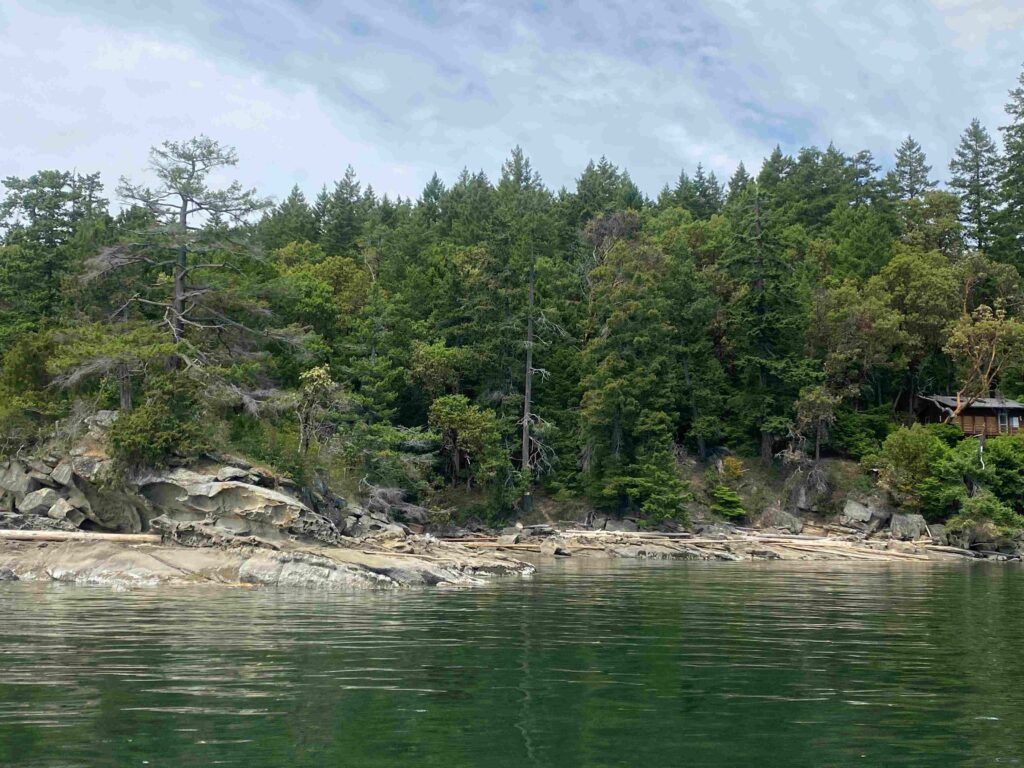
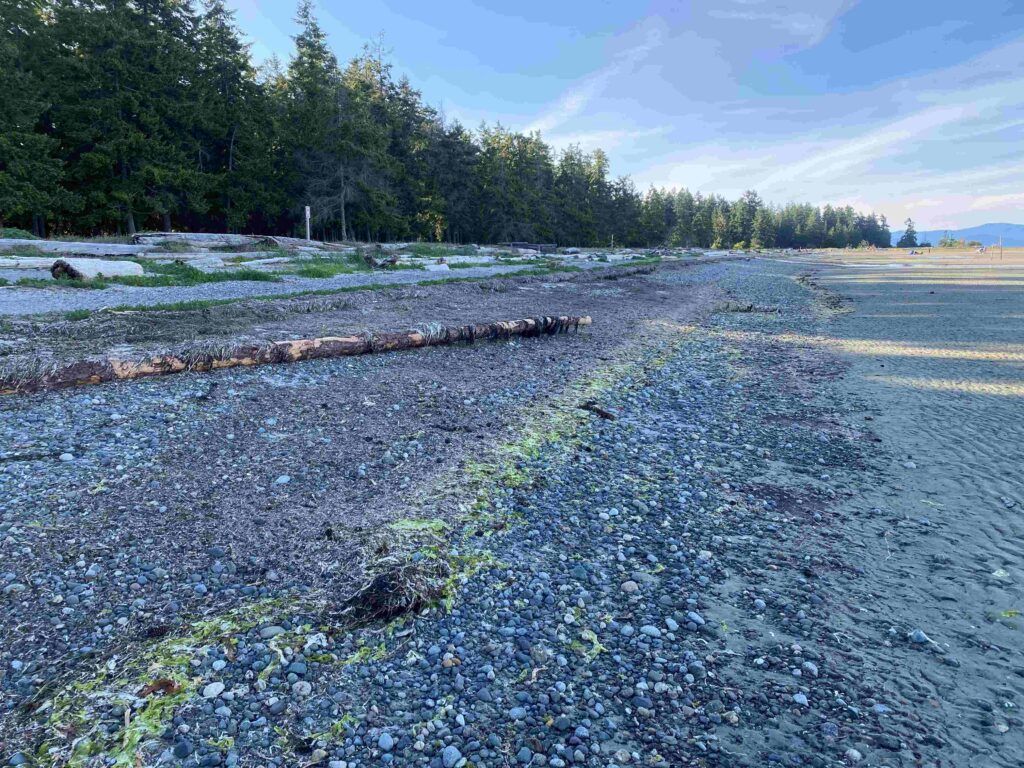
Naturalized shorelines benefit waterfront homeowners by protecting their shorelines from erosion and floods, supporting ecosystem health and the natural aesthetic of the shore.
Many people are drawn to live near lake or ocean shorelines, but human activity next to shorelines can have negative impacts on coastal processes. Changing climatic conditions caused by humans can also threaten the safety and integrity of shoreline infrastructure. Coastal properties can face several hazards and threats, including storms, erosion, flooding, and sea-level rise. Erosion, in particular, undermines the physical structure of beaches by depleting sediment (e.g., sand, gravel, cobbles) that is essential for absorbing waves and for habitat to many species. Read this article from the Stewardship Centre for BC to learn more about how climate change could impact the shoreline.
While hard armour (e.g., seawalls, rip rap) has often been used to protect shorelines, it can worsen erosion and increase risks to shoreline properties and neighbours. Hard armouring alters coastal processes, increases wave energy, and causes erosion at the base of these structures through scour. This makes the hard armour structure vulnerable to collapse or failure.


Naturalized shorelines are more resilient to changing coastal environments and climate because they are better at dissipating wave energy, and include ecosystem features that help coastal ecosystems adapt to change. Nature-based coastal solutions incorporate natural processes and features that are better able to withstand wind, wave action, tides, seasonal changes and longer-term impacts of sea level rise.
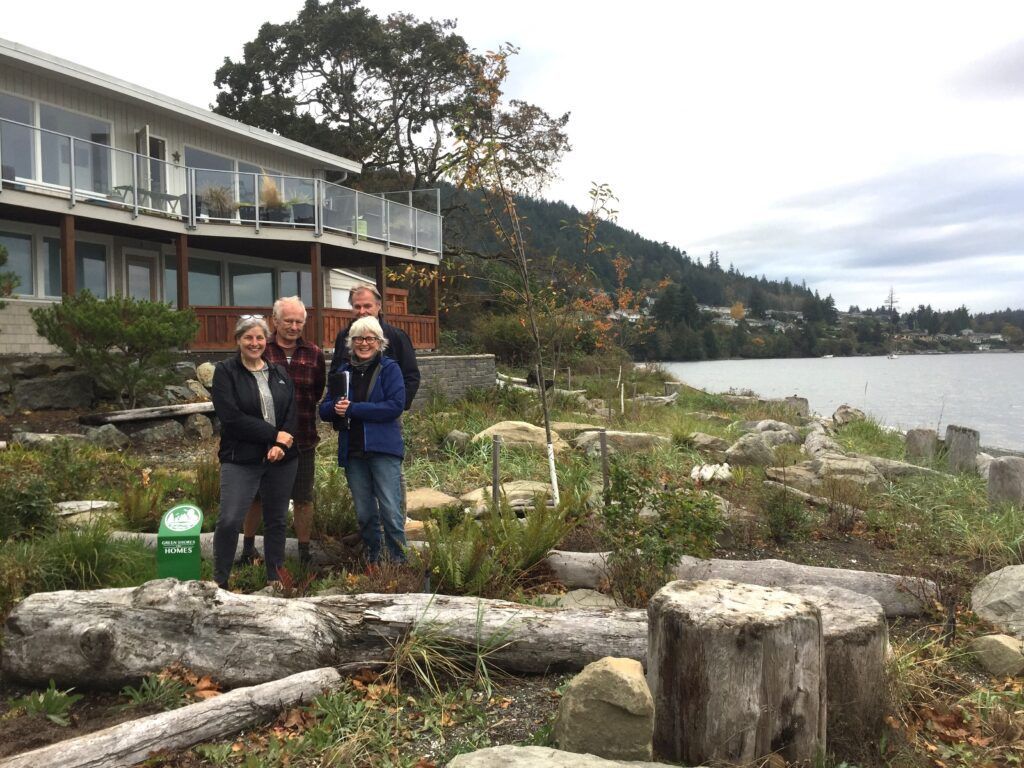
When considering applying nature-based protection on your shoreline, consult with qualified environmental professionals such as coastal engineers and biologists to develop the best solution for your shoreline and property needs. Click here to learn more about nature-based solutions. Some related activities can include:
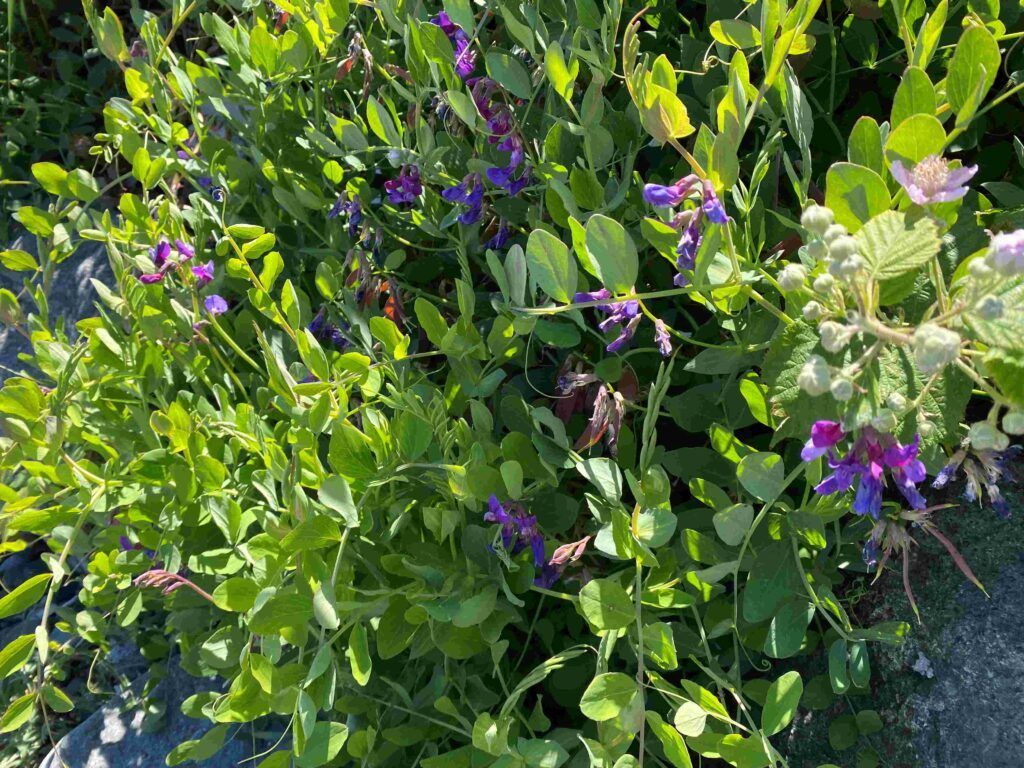
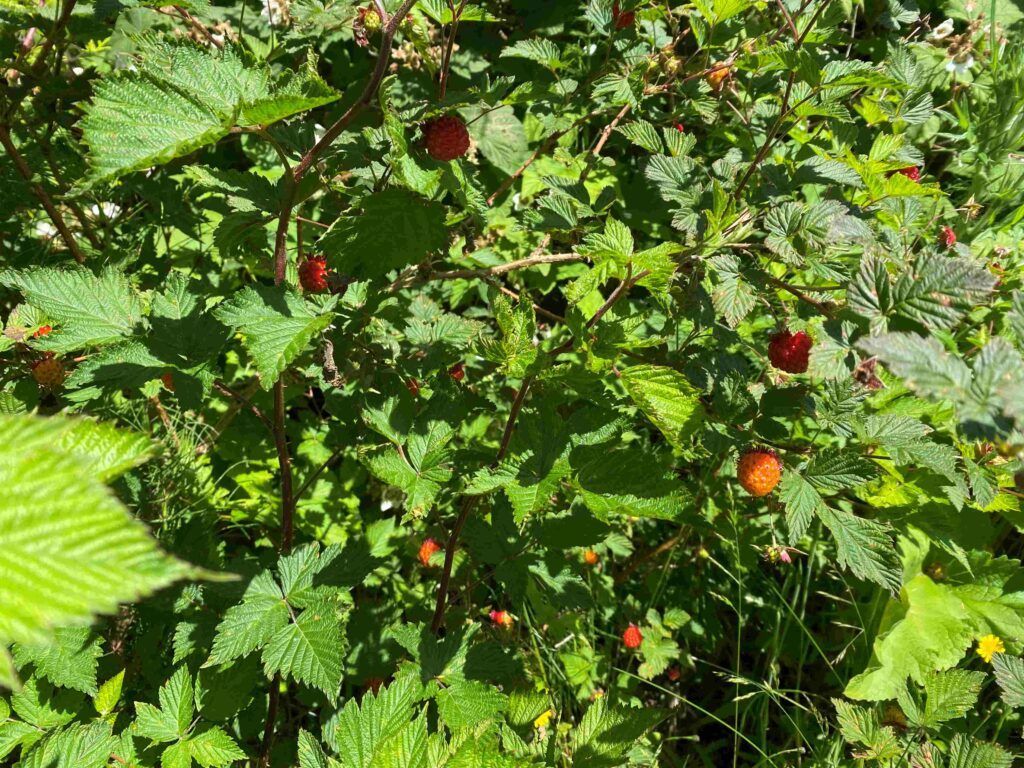
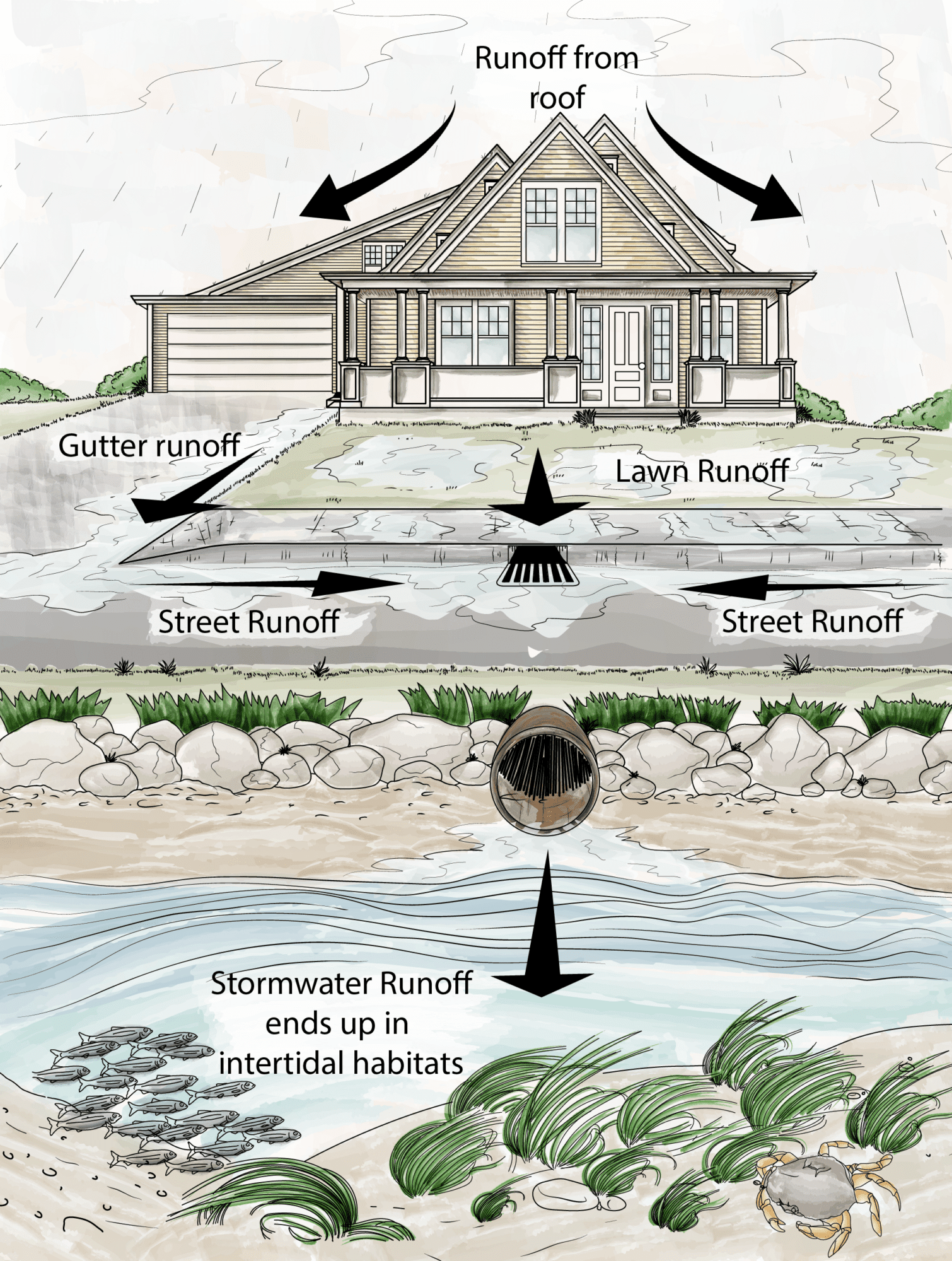
The Stewardship Centre for BC offers the Green Shores® Program, which includes technical guidance, homeowner support, and information about best practices for implementing nature-based solutions that promote naturalized shorelines. Green Shores® is applicable to residential properties and commercial, multi-family residential, subdivision, parks or institutional waterfront developments. Learn more on how to get started with Green Shores.
As part of the Resilient Coasts for Salmon project, waterfront property owners on the East Coast of Vancouver Island and the Gulf Islands might be eligible for a free shoreline assessment to apply nature-based solutions with Green Shores. Click here to learn more about shoreline assessments on the Stewardship Centre for BC website.
Photo credits: Kelly Loch, District of West Vancouver, and Holly Sullivan.